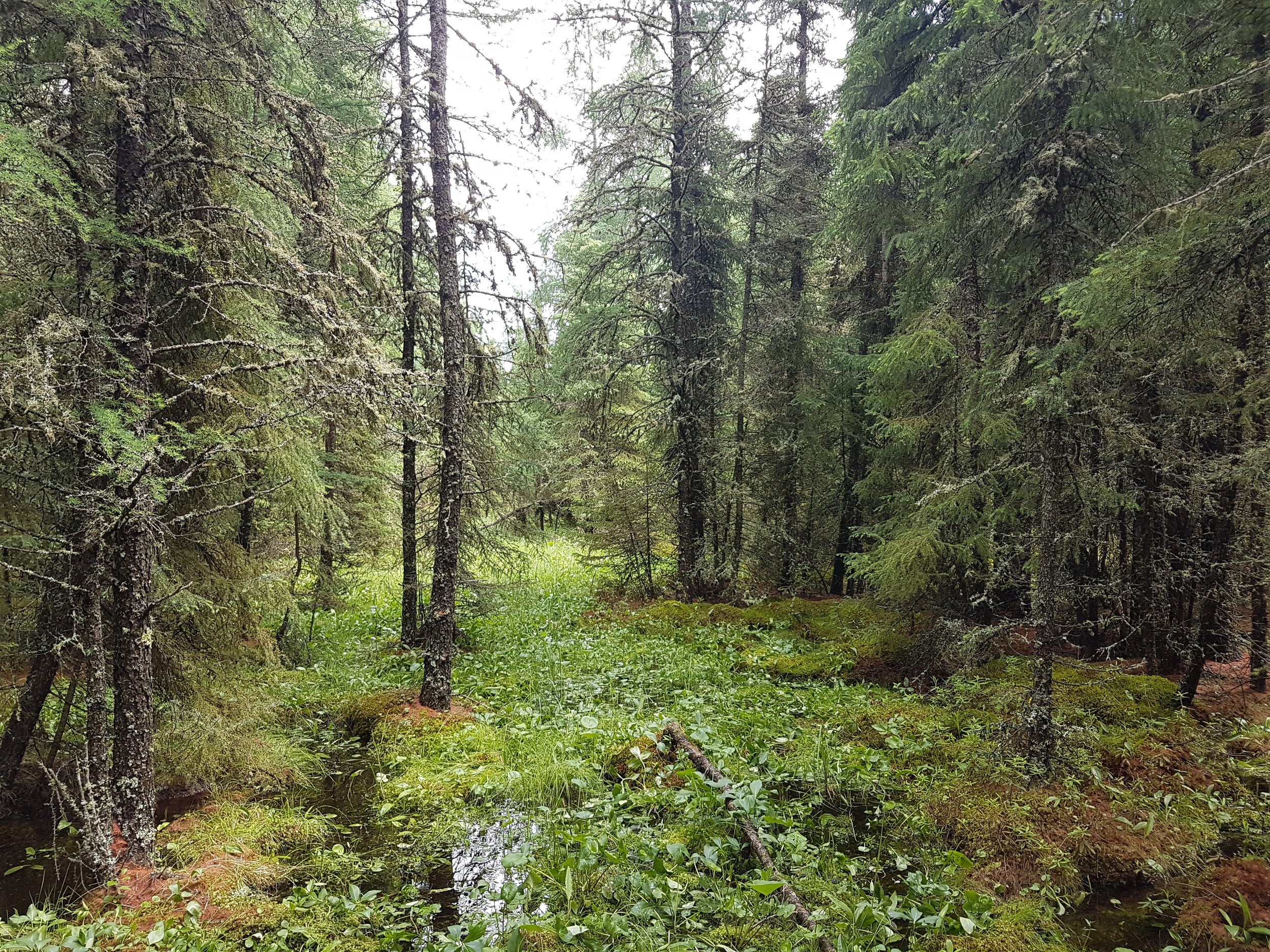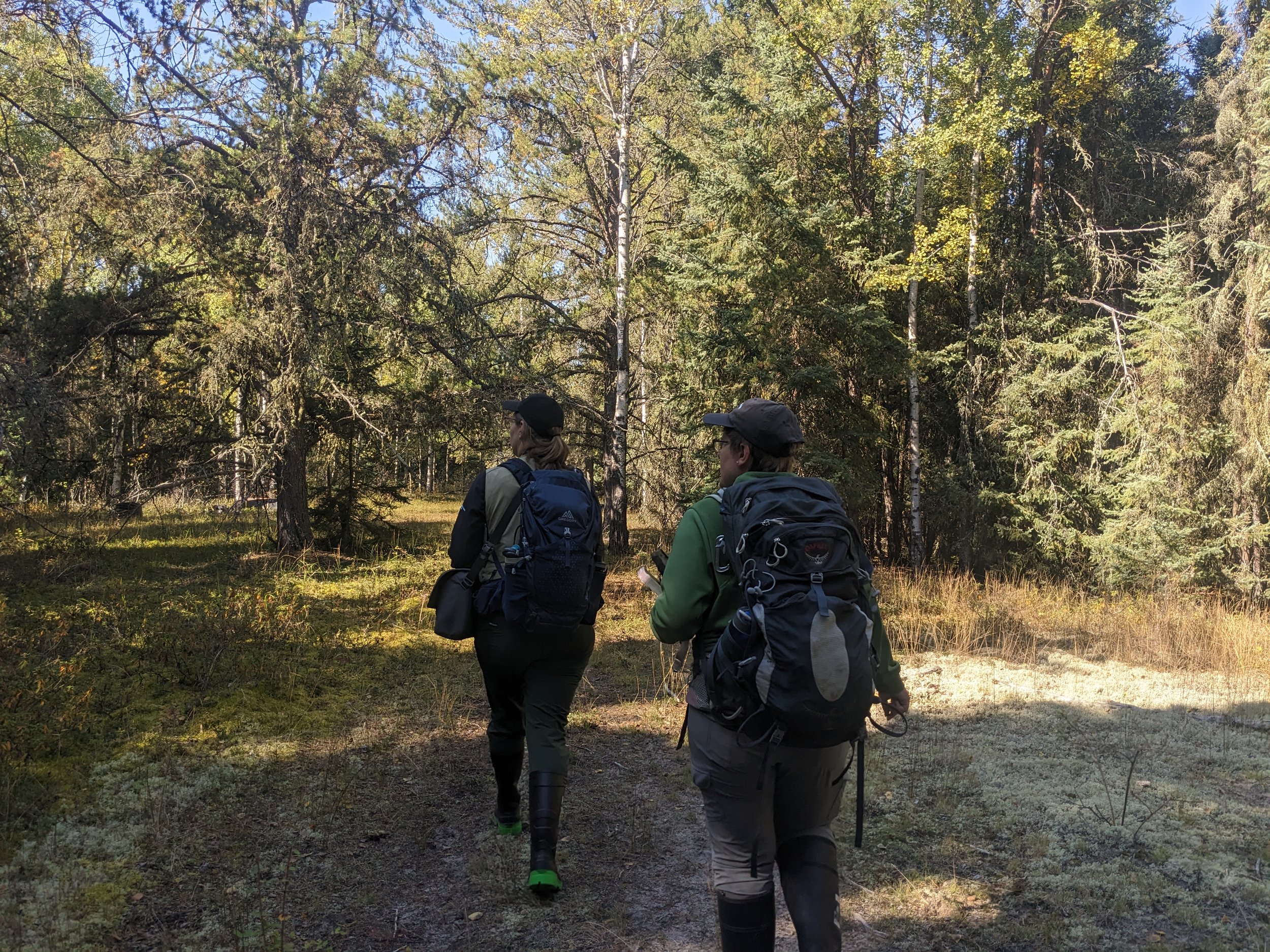Located an hour directly north of Edmonton, Sundew Conservation Land is the newest addition to EALT’s lands! This is the second conservation land, after JBJ McDonald Conservation Land, that EALT has had the chance to specifically select and purchase. This was made possible by the grant given to us by Environment and Climate Change Canada, for the purpose of securing and conserving carbon-rich lands to help mitigate the increasing impacts of climate change. We’re thrilled to have the honour of stewarding this unique habitat!
Conservation Team Lead, Meghan Jacklin, carrying a sign post through Sundew Conservation Land.
Biology
Sundew is 151 acres of wet coniferous fen, which is defined as having a high water table, but with slow internal drainage by seepage. It is home to a wide variety of species: flora, fauna, and fungi alike. This makes the land vital to regulating water flow, improving water quality, and supporting a multitude of unique plant and animal species.
The forest consists mainly of coniferous trees, which includes white spruce, black spruce, larch, and even some jack pines. The deciduous trees present are predominantly poplar and aspen, but the understory of the forest boasts a wealth of fruit-bearing shrubs that provide essential food for wildlife.
Round-leaved sundew.
One unique plant species lends its name to this conservation land - the round-leaved sundew! These diminutive yet fascinating plants are a rare example of a carnivorous plant in Alberta. Rather than trapping insects in jaw-like structures like the famed Venus fly trap, the sundew instead attracts insects by producing a sugary coating on its leaves, then capturing the unsuspecting visitors with glandular tentacles. Once captured, the plant then extracts nutrients from their bodies that it can’t find in its environment - sundews rely on carnivory as a feeding strategy due to the nutrient-poor nature of the soil where they grow.
Sundews can be found exclusively in marshlands and fens, and since this habitat dominates this conservation land, we opted to name it for this unique member of the coniferous fen plant community.
Canada Lynx. Photo credit: Gerald Romanchuk
The wildlife present on the land includes deer, moose, snowshoe hare, bears, cougars, as well as lynx! The abundance of hares and relatively remote location makes it ideal to support lynx, which is one of Alberta’s most elusive carnivores. So far, EALT staff have only encountered their footprints, but wildlife cameras have been set up to hopefully capture an image of one.
Sequestration Superpower
The thick peat moss present also provides Sundew Conservation Land with another secret superpower: carbon storage. Peatlands are the largest terrestrial carbon store on the planet, and are responsible for holding 370 million tonnes of CO2 - a storage capacity that far exceeds even what trees are capable of!
Visitation and Access
Due to the extremely wet and fragile nature of this habitat, Sundew is best accessed during winter. There are no formal trails, but the land has two cutlines on it that can serve as trails for visitors. In the warm seasons, the cutlines are quite wet and swampy.
EALT has decided not to establish further trails on this land due to how remote it is, and also because of how sensitive peatlands are to disturbance. We strongly recommend that visitors have a good understanding of navigating remote and rural areas before visiting, as there is minimal signage on the land. Parking is roadside only, and visitors should ensure that their vehicle is not an obstacle to passing traffic.
Sundew Winter Walk Opening Event on February 24, 2024.
Thank you for reading this introduction to our newest conservation land! Though the generous grant from Environment and Climate Change Canada enabled us to purchase Sundew, it will take funding into the future in order to ensure that it stays beautiful and healthy. To help us with this, you can contribute with monetary donations, or by volunteering for our stewardship events.










